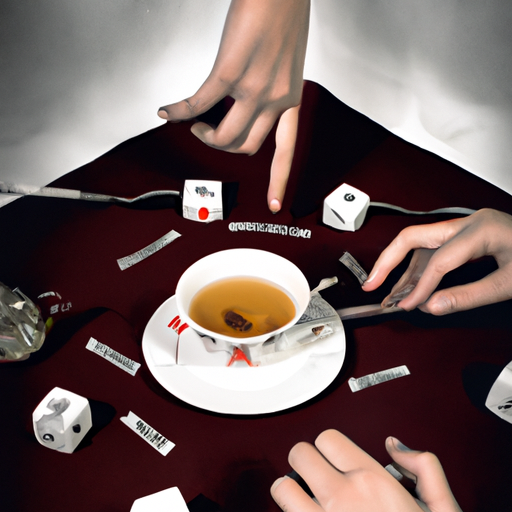The Unspoken Language of Tea: Exploring Tea Communication and Etiquette Across Cultures
Entering the world of tea is more than just a delightful journey of taste; it's an exploration into the various ways tea has permeated cultures across the globe. Many traditional tea-drinking practices involve an unspoken language of gestures, etiquette, and subtle cues. This blog post will dive into the fascinating world of tea communication and etiquette across different cultures. So, grab a steaming cuppa and let it teach you a thing or two about how people "speak" through tea.
Chinese Tea Communication and Etiquette
In China, where tea culture has deep roots, various customs have developed over thousands of years. One prominent feature is the "gongfu" tea ceremony, a meticulous method of brewing and serving tea. During this ceremony, the host and guests exchange a series of subtle gestures which convey gratitude and respect.
| Gesture | Meaning |
|---|---|
| Host pouring tea | Invitation for conversation and camaraderie |
| Tapping the table with two fingers | Expressing thanks for being served tea |
| Sniffing the tea before drinking | Paying respect to the tea's aroma |
| Slurping the tea | Enjoyment and appreciation of the tea's flavor |
Tea-drinking in China often involves a communal experience, where elders and superiors are served first as a sign of respect. Additionally, it's customary to hold the teacup with both hands - one on the bottom and the other on the side - to convey gratitude and respect to the host.
Japanese Tea Communication and Etiquette
Japanese tea culture is intricate and highly ritualized, with the "chanoyu" or "chado" tea ceremony at its core. The ceremony is a spiritual experience, with a focus on serenity, harmony, and mindfulness. Within this ancient practice, there exists non-verbal communication language and strict etiquette.
| Action | Meaning |
|---|---|
| Host silently serving tea | Respectful and mindful presentation |
| Guest bowing before receiving tea | Gratitude and appreciation |
| Rotating the tea bowl | Admiring the craftsmanship and avoiding drinking from the front |
| Wiping the rim of the bowl after drinking | Showing care for the tea implements and cleanliness |
In Japan, the tea ceremony etiquette also extends to the preparation of the tea room, attire, and seating arrangement. Guests are expected to dress modestly and sit in the traditional "seiza" position with their legs folded underneath them.
English Tea Communication and Etiquette
English tea time is synonymous with leisurely afternoons spent enjoying tea, sandwiches, and cakes. While the language of tea in England may not be as codified as in China and Japan, there are certainly traditions and unspoken rules to observe.
| Behavior | Significance |
|---|---|
| Stacking pastries on a tiered cake stand | Display of elegance and refinement |
| Holding the teacup and saucer properly | Manners and sophistication |
| Stirring tea without clinking the spoon | Tea etiquette and politeness |
| Placing the spoon on the saucer after stirring | Signaling tea is well-mixed and ready to drink |
Attention to detail is highly valued during an English tea time, including the table setting and arrangement of various tea sandwiches, scones, and other treats. It's customary to serve tea and food in a particular order while engaging in light, polite conversation.
Tea Communication and Etiquette Around the World
Tea culture transcends borders, and different societies imbue their tea-drinking practices with unique quirks and nuances.
| Country | Custom | Explanation |
|---|---|---|
| Russia | Drinking tea from a saucer | To help cool the tea quickly, making it easier to drink |
| Iran | Holding sugar cubes between the teeth while drinking tea | Sweetening the tea in the mouth instead of stirring it in the cup |
| Turkey | Pouring tea from a higher level | Showcasing proficiency in serving tea and creates an appealing frothy surface |
| Morocco | Adding lots of sugar and mint into their tea | Hospitality and sweetening life for guests |
A Universal Language
Tea has a unique way of connecting people and bridging cultural gaps, facilitating conversation, and encouraging mindfulness. By exploring and respecting the different methods of tea communication and etiquette, we can better appreciate the intricacies of this beloved beverage and the cultures it represents. So next time you sip your favorite brew, pause for a moment and ponder how our humble cuppa has become a language that transcends borders, cultures, and time.
